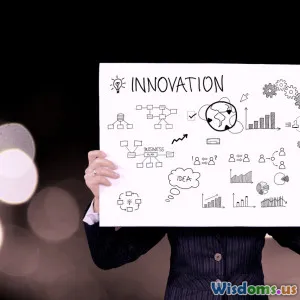
How 5G Will Change Business Communication
7 min read Explore how 5G revolutionizes business communication with speed, reliability, and transformative technologies. (0 Reviews)
How 5G Will Change Business Communication
Introduction
Imagine attending a video conference where delays are a thing of the past, real-time collaboration feels seamless, and devices connect instantly with lightning-fast responses. Welcome to the future propelled by 5G technology. Beyond a mere upgrade from 4G, 5G promises to radically redefine how businesses communicate internally and with their customers, offering immense possibilities for innovation, efficiency, and competitiveness.
Businesses are on the brink of revolution as 5G ushers in unprecedented speed, ultra-low latency, and the capacity to connect billions of devices in the Internet of Things (IoT). This article explores how 5G is set to transform business communication with actionable insights and illustrative examples.
The New Era of Speed and Responsiveness
Lightning-Fast Connectivity
5G networks offer download speeds up to 10 Gbps, which is roughly 100 times faster than the typical 4G connection. This increase in speed doesn't just mean faster browsing for individual users; it directly accelerates business operations relying on data transmission.
For example, an architectural firm using heavy 3D modeling and augmented reality for client presentations can now transfer and stream complex files in real-time, anywhere in the world. Industries that once faced bandwidth bottlenecks, such as video production and financial services processing high-frequency trades, will experience enhanced performance and reduced waiting times.
Ultra-Low Latency and Its Impact
Latency with 5G networks can drop below 1 millisecond, dramatically improving responsiveness. This is critical in applications requiring instantaneous feedback, such as virtual meetings, remote surgeries, or autonomous manufacturing lines.
Consider remote conferencing: With lower latency, video and audio lag issues reduce drastically, enabling clearer communication. A company like Cisco predicts that ultra-low latency could improve collaborative platforms by making virtual interactions indistinguishable from in-person ones, transforming remote work dynamics.
Enhanced Reliability and Network Capacity
Handling Massive Device Connections
5G doesn’t just speed up individual connections; it’s engineered to support up to a million devices per square kilometer, a crucial improvement for businesses increasingly dependent on IoT devices.
Retailers can use extensive sensor networks to monitor inventory, security cameras, and customer flows simultaneously without network degradation. Smart factories can harness this capacity to run myriad connected devices, from robots to environmental sensors, enhancing automation and operational awareness.
Network Slicing for Business Needs
One compelling 5G feature is network slicing, which allows operators to create multiple virtual networks over a shared physical infrastructure tailored to specific business requirements.
For instance, a logistics company might use a slice with ultra-reliable low latency for fleet management, while dedicating a high-bandwidth slice to video surveillance. This customization increases network efficiency, security, and ensures critical applications run uninterrupted.
New Communication Paradigms Enabled by 5G
Real-Time Collaboration and Immersive Experiences
With 5G’s robust infrastructure, businesses can adopt cutting-edge collaboration tools like augmented reality (AR) and virtual reality (VR), enabling immersive remote meetings, product demos, and training.
Take the automotive industry, where manufacturers like BMW have begun using AR glasses facilitated by 5G for real-time assembly line checks and remote expert consultations, reducing downtime and improving quality.
Integration of AI and Machine Learning
5G’s rapid data speeds enable faster processing of AI algorithms that power chatbots, virtual assistants, and decision-support systems. This real-time AI interaction enhances customer service, streamlines workflows, and improves decision-making.
A prime example is the banking sector — AI-powered financial advisors accessible via mobile devices offer personalized advice with minimal delay thanks to 5G, improving client engagement and satisfaction.
Challenges and Considerations
Infrastructure and Investment
Deploying 5G infrastructure demands significant investment in antennas, small cells, and fiber connections, especially in urban centers. Businesses need to carefully assess the costs against expected benefits when migrating communication systems.
Security Concerns
The expanded bandwidth and new architectures bring increased vulnerabilities. Cybersecurity strategies must evolve to address potential risks from latency-sensitive applications and abundant IoT endpoints.
Industry leaders, such as the World Economic Forum, emphasize safeguarding data privacy and implementing robust encryption standards alongside 5G adoption.
Workforce Training and Change Management
Adopting new technologies requires upskilling employees to leverage 5G-enabled tools effectively. Resistance to change can impede progress, so structured training programs and strategic leadership involvement are crucial.
Conclusion
5G technology is more than a faster internet connection; it is a foundational enabler for next-generation business communication. From accelerating data transfers to supporting vast IoT ecosystems and fostering real-time immersive experiences, 5G will transform how companies collaborate, innovate, and compete.
Forward-thinking businesses must embrace 5G’s potential, investing in infrastructure, updating security protocols, and empowering their workforce to cultivate an agile, connected future.
By integrating 5G capabilities, businesses will not just communicate—they will communicate smarter, faster, and more reliably than ever before.
As 5G continues to roll out worldwide, the opportunity to redefine business communication beckons boldly—are you ready to connect?
Rate the Post
User Reviews
Popular Posts





















